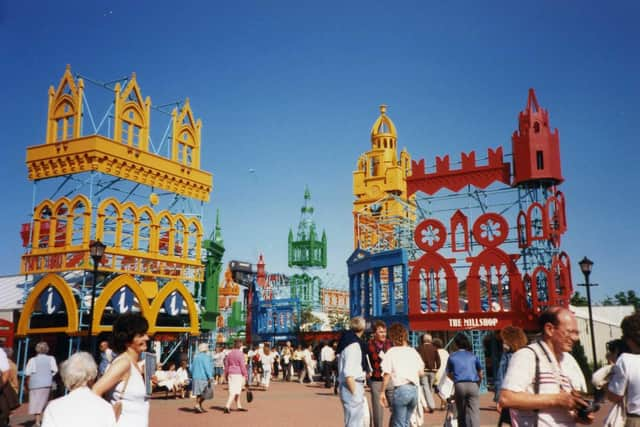Archaeologists trace remains of 'huge spectacle' at Glasgow Garden Festival site
and live on Freeview channel 276
The excavation comes more than three decades after the 1988 extravaganza, which turned a plot of land on the south bank of the River Clyde from a declining dockyard into green spaces, a theme park and adventure playground that was visited by more than four million people.
A team of staff and students from the archaeology department at the University of Glasgow started work on the project on Monday, with a geophysical survey to identify what remains of the festival site beneath the ground.
Advertisement
Hide AdAdvertisement
Hide AdMuch of the site has been redeveloped, but the project – called After The Garden Festival – will base its investigation in the area of Festival Park on Govan Road.
The festival, which was opened by the Prince and Princess of Wales, put Glasgow on a the national stage between April and September 1988, with attractions including the Coca Cola rollercoaster, a miniature railway, a Roman Bathhouse and endless pavilions and garden areas.
The event not only transformed part of the city, but also the way Glasgow was viewed by others as it fought back from a long and painful period of industrial decline.
Dr Kenny Brophy, a senior lecturer in archaeology at Glasgow University, said: “The place we will be surveying is now called Festival Park and it hosted some features many visitors will remember, including a miniature railway line, the replica Roman Bathhouse, the pavilion of Bowmore Distillers, a Highland-themed restaurant, and artworks such as scarecrows and The Ancient Forester.


Advertisement
Hide AdAdvertisement
Hide Ad“We want to see what remains, 34 years on, of that huge spectacle – what can be detected of the attractions and the people that visited them, and did visitors leave anything behind?” he said.
“It is also a great opportunity to show that archaeological techniques can help to shed light on our contemporary world and not just the ancient past.”
Surviving visible remains of the event will be surveyed, with some small-scale excavation work also due to be carried out.
Last year, the Floating Head, a sculpture by artist Richard Groom that poked out of The Clyde during the festival, was relocated to an old boatshed on the Clyde and put on the water once again.
Advertisement
Hide AdAdvertisement
Hide AdThe public are being encouraged to watch the team at work this Saturday between 10am and 3pm and bring down photos and memories of the festival to share.
The project can be followed at www.glasgowgardenfestival.org, which will initially serve to collect details about the features – both surviving and destroyed – that made up the Garden Festival. More than 270 items and areas are listed at present, with hopes they can be added to.
Project leader Lex Lamb said: “We want to find out how many of these have survived around the UK, and record as much detail of the features – both surviving and destroyed – as possible. To create a lasting resource, we are appealing to those who may have knowledge of the locations of items that originated from the Garden Festival, as well as those with photographs and other information, to submit them to us via the website.”
Comment Guidelines
National World encourages reader discussion on our stories. User feedback, insights and back-and-forth exchanges add a rich layer of context to reporting. Please review our Community Guidelines before commenting.
